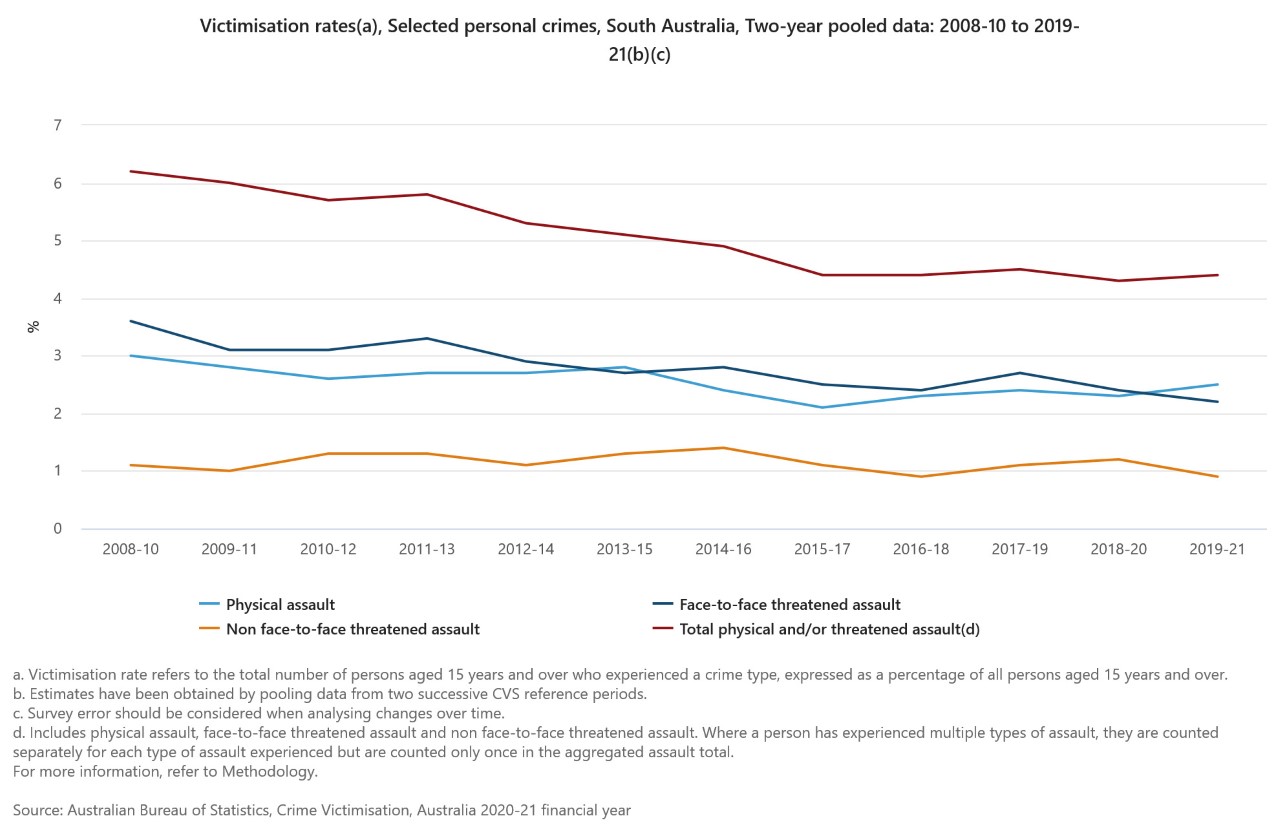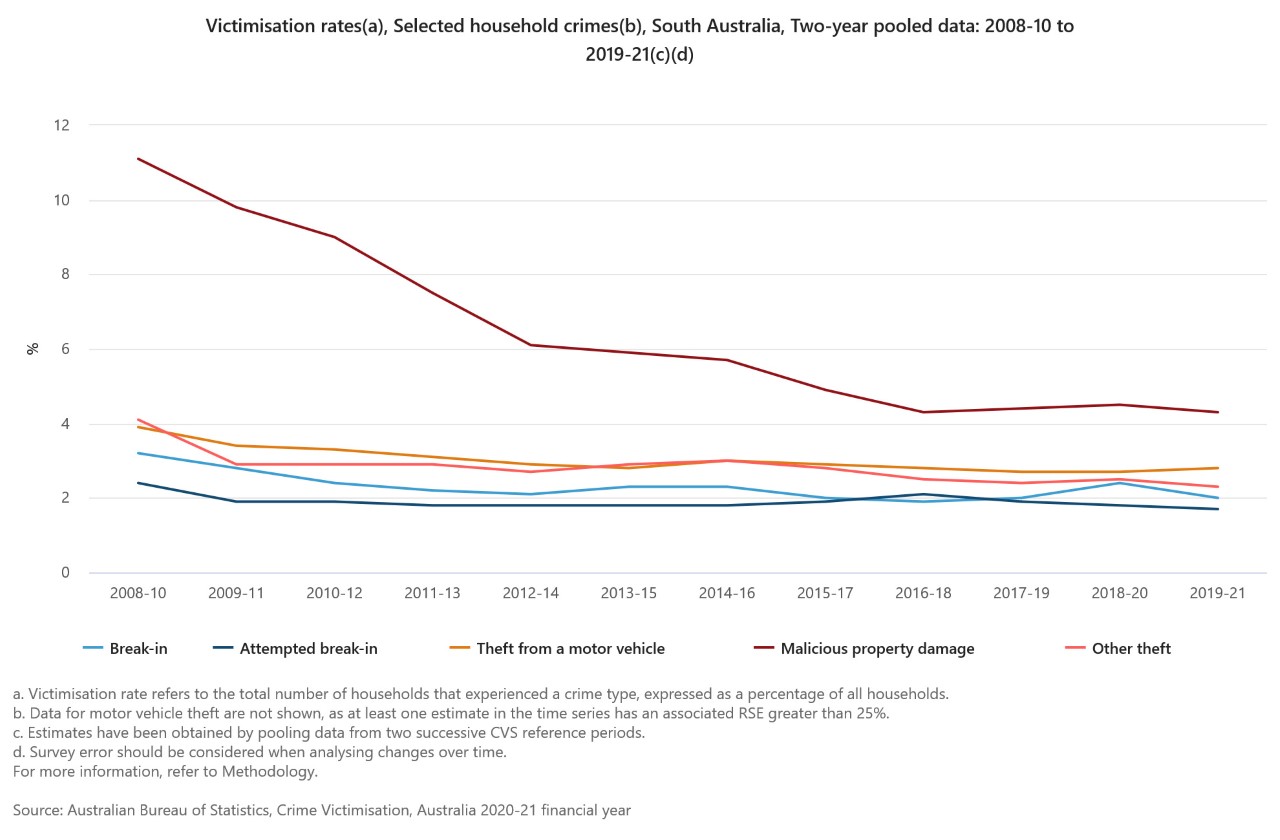Pressure on police force recruitment and prison systems could be reduced through more attention being paid to earlier interventions, rehabilitation and other "smart" approaches to crime prevention, according to Flinders University criminologists.
The Flinders experts say community safety is an important and ongoing responsibility for governments, noting a recent high-profile SAPOL recruitment drive in South Australia to fill dozens of positions across the police force.
"While policing services are important, the common goal to lower crime levels even more can be achieved through early and societal prevention of crime, including a smart approach to crime prevention and more holistic crime victim services," says Associate Professor Marinella Marmo.
"This is critical if we want to continue seeing a downwards trend in crime rates, perhaps without the need for more police enforcement and demands on prison space."
 With COVID-19 reducing some criminal activities, the national long-term Australian Bureau of Statistics data are edging lower for personal crimes involving physical assault, theft, robbery, break-in and property damage, with the exception of sexual assault, which Associate Professor Marmo says "isn't easily reduced by the presence of more police officers on the street".
With COVID-19 reducing some criminal activities, the national long-term Australian Bureau of Statistics data are edging lower for personal crimes involving physical assault, theft, robbery, break-in and property damage, with the exception of sexual assault, which Associate Professor Marmo says "isn't easily reduced by the presence of more police officers on the street".

"Evidence indicates that an increase in frontline policing may reduce some types of crime, such as theft, although other steps to achieve social benefits and social equity can produce better value and long-term results," says researcher Dr Melissa de Vel-Palumbo.
"Increased public housing, more resources for mental health services, accessible and stronger drug and alcohol health treatment options and victims of crime services, and addressing domestic and family violence in a proactive way would be a more effective way to reduce crime rates in the long term."
 Flinders University criminology researchers, including Dr Andrew Groves, Dr Katherine McLachlan and Dr Jeremy Ryder, are also investigating better long-term programs, noting that some people who are victims have turned offenders as a result of violent or other crimes.
Flinders University criminology researchers, including Dr Andrew Groves, Dr Katherine McLachlan and Dr Jeremy Ryder, are also investigating better long-term programs, noting that some people who are victims have turned offenders as a result of violent or other crimes.
The researchers support a 'one-stop shop' for victims in both metropolitan and regional South Australia, to prevent victims having to possibly "repeat their stories over and over again, which causes secondary victimisation and a reduced trust in the justice system".

"We would support a one-stop shop for victims to receive court support, other legal services plus counselling and other health services," Associate Professor Marinella adds.
SA personal crime rates are tracking national trends, with official ABS statistics (national) changes from 2019-20 to 2020-21:
- Sexual assault increased from 0.3% to 0.5%
- physical assault decreased (2.3% to 2.0%)
- face-to-face threatened assault (2.4% to 2.2%)
- non face-to-face threatened assault eased (0.9% to 0.8%)
- break-ins decreased from 2.4% to 1.7%
- malicious property damage decreased from 4.6% to 4.0%
- theft from a motor vehicle 2.7 to 2.5%
- other theft 2.4% to 2.2%, and
- other crimes remained stable

Official ABS statistics (national) over the past 12 years:
- sexual assault is stable at 0.3% (from 0.3% in 2008-09)
- physical assault decreased (3.1% to 2.0%)
- face-to-face threatened assault fell (3.9% to 2.2%)
- non face-to-face threatened assault eased (1.2% to 0.8%)
- break-in decreased (3.3% to 1.7%)
- attempted break-in (3.1% to 1.8%)
- motor vehicle theft (1.1% to 0.5%)
- theft from a motor vehicle fell (4.5% to 2.5%)
- malicious property damage (11.1% to 4.0%), and
- other theft (4.4% to 2.2%)






